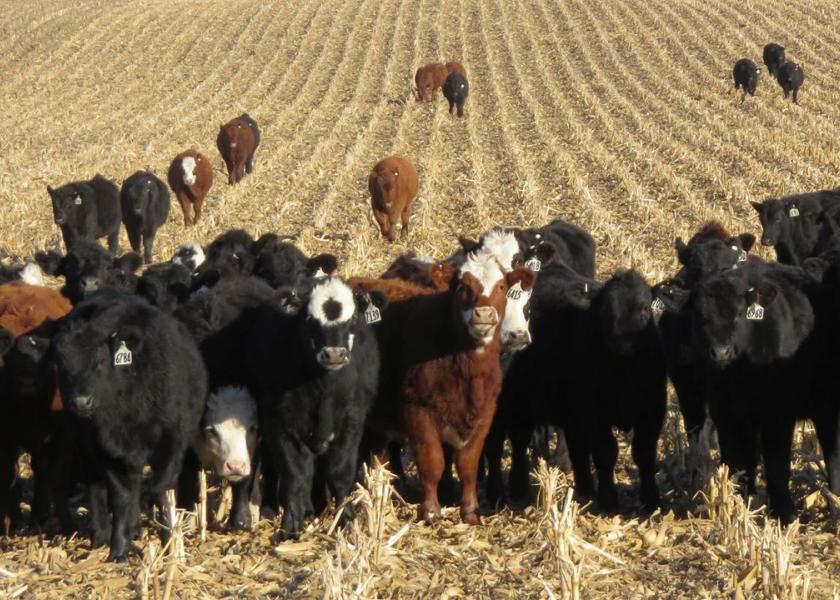Crop Residue Exchange Links Cattlemen with Feed Resources

With dry conditions in much of the western half of the United States, reports of livestock producers looking for fall and winter forage are accumulating. The University of Nebraska-Lincoln Crop Residue Exchange (http://cropresidueexchange.unl.edu) is a free online tool designed to link cattle producers to other producers with available grazing resources.
Crop producers who have previously listed crop residue available for grazing are encouraged to log in and update their listings on the Crop Residue Exchange for the 2021-2022 fall and winter grazing season. Producers new to the exchange are encouraged to consider utilizing it to connect with livestock producers to create a mutually beneficial relationship.
The exchange makes it possible for producers in Nebraska, Iowa, Missouri, Kansas, Colorado, Wyoming and South Dakota to list fields of crop residue, pasture, and other forage resources they have available for grazing and for cattle producers to connect with them.
After establishing an account login on the Crop Residue Exchange, producers with available forage can draw out the plot of land available for grazing by using an interactive map and entering basic information about the type of forage available, fencing situation, water availability and dates available. They also need to provide their preferred contact information. The land available for grazing can be described as a “Residue Type” (corn, wheat, sorghum, other) or pasture. Several pricing options are available, including cost-per-acre or a cost-per-head per-day. A majority of the current listings on the exchange are for corn residue. Pricing examples include unfenced corn residue for $10 per acre and fenced residue for 45 cents per-head per-day, with no care provided. Other listings provide care for the animals along with the grazing access on unfenced property for 45 cents to $1 per-head per-day.
Livestock producers looking for forage resources can easily search the Crop Residue Exchange database for grazing available within a radius for the location of interest. Contact information attached to each listing is viewable only to those logged into the exchange website. Producers can save their searches and receive email notifications if listings become available that match their search criteria.
In addition to providing a winter feed resource for cattle producers, grazing corn residue can increase the amount and rate of corn residue breakdown. University of Nebraska-Lincoln research results show small but positive impacts on subsequent crop production after grazing and no increased erosion risks when 15% to 30% of the corn residue is removed through grazing.
The Crop Residue Exchange has several hundred registered users with over 2,000 searches for grazing resources conducted each year. This year is an extremely dry year with many livestock producers in the Dakotas, Montana and states west of Nebraska inquiring with Nebraska Extension about available feed resources in Nebraska this fall and winter. Crop producers with available forage resources and interest in generating extra cash flow are encouraged to use the Exchange to connect with these producers.
The Crop Residue Exchange is possible with funding support from Nebraska Extension, the Northern Plains Climate Hub and the University of Nebraska Institute of Agriculture and Natural Resources Beef Systems Initiative.
Visit the exchange at https://cropresidueexchange.unl.edu.







